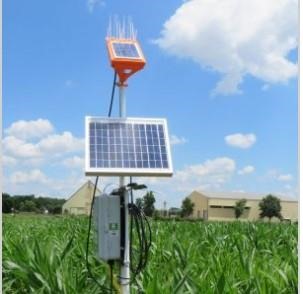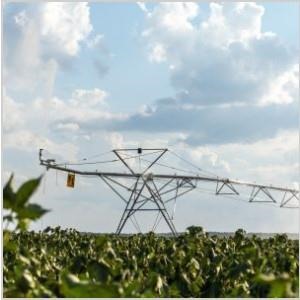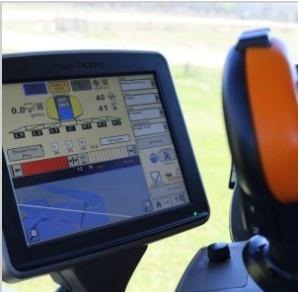Farmers are some of the most tech-savvy people in the world. Often, they are early adopters of emerging technologies that create a more efficient, profitable and sustainable industry. Some of these technologies—and the data they collect—are crucial parts of the management approach known as precision agriculture.
Brenda Ortiz, an Alabama Cooperative Extension System precision agriculture specialist, said there is a lot of variability within a field—including soil type and topography—which suggests that farmers must be more precise with their management. This is where precision agriculture makes a difference.
“Precision agriculture is the use of a suite of technologies and data for implementation of the right management practice at the right time and place,” Ortiz said.
Technologies in Precision Agriculture
Precision agriculture allows farmers to use technologies and data to make specific changes to a field. Some examples of technologies used in the agriculture industry are yield monitors, variable rate controllers and Global Positioning Systems (GPS).
“Farmers are very committed to sustainability, and they recognize the power of the data collected through technology in their farming equipment,” Ortiz said. “They know that this data is providing them with more knowledge that leads to overall efficiency and sustainability.”
Yield monitors collect yield data from a field as a crop is harvested. After harvest is complete, the farmer has a yield map to reference as they measure the success of their fertilizer or other input applications through the season.
“This yield map acts as the final report card of the growing season,” Ortiz said. “It shows the response of the crop not only to the management that was implemented but the interaction of the abiotic and biotic factors that influence crop growth and development.”
Variable rate controllers allow equipment to distribute certain inputs at different rates during a pass over a field. These inputs include fertilizer, water and seeds. For example, as a center pivot irrigation system travels across a field, the rate controller is changing the distribution rate of water based on what each area of the field needs.
In order for a variable rate controller to change different rates of an input, farm equipment must have GPS to guide it as it travels across the field.

Soil Sensor

Center Pivot Irrigation System

Variable Rate Controller
Working in Tandem
Traditionally, farmers have used a single management strategy for an entire field. Now, by using different precision agriculture technologies in tandem, farmers can adjust their management practices based on the different characteristics of a field.
“Yield monitors, variable rate controllers and GPS all complement each other,” Ortiz said. “If you have a variable rate controller and a yield map created from yield monitors, you can create a prescription map for the variable rate application of seed, nutrients or water during the upcoming season.”
Similar to a prescription from your doctor, the data gathered from these technologies tells farmers what management items are “prescribed” for the next growing season.
“Based on those maps, or other data layers like drone images, farmers can change the rate of an input across a field,” Ortiz said. “This reduces overuse of resources on areas that perhaps don’t need them and increases resources on other parts of the field where the yield potential is higher.”
This is one of the many ways farmers are better utilizing resources and being good stewards of the land they farm.
A Commitment to Helping Farmers
One of the cornerstones of Alabama Extension is the research and education conducted by its specialists and agents. Ortiz continues that tradition by her commitment to helping farmers. She is conducting research with variable rate technologies for pivot irrigation systems, the use of imagery from drones and satellites to support in-season management and yield prediction and the use of crop growth simulation models to identify best management practices.
“I grew up in Colombia, one of the countries with the highest biodiversity around the world. I recognize that we have a responsibility, and it is the preservation of natural resources,” Ortiz said. “My commitment is to conduct research and develop Extension education programs that help the farming community better utilize this modern technology to protect the environment and advance the future of agriculture.”
Down to Earth: Agriculture Sustains Alabama
Alabama Extension is getting Down to Earth. Why? Because agriculture sustains Alabama. Whether your ag experience is in the grocery store, in the classroom or as your profession—Extension has a resource for you.
We are proud to be partnering with the Alabama Agribusiness Council, the Alabama Cattlemen’s Association, the Alabama Department of Agriculture and Industries, the Alabama Farmers Federation, the Alabama Poultry and Egg Association, the Alabama Forestry Commission, Sweet Grown Alabama and the Alabama Association of RC&D Councils.
Source : aces.edu